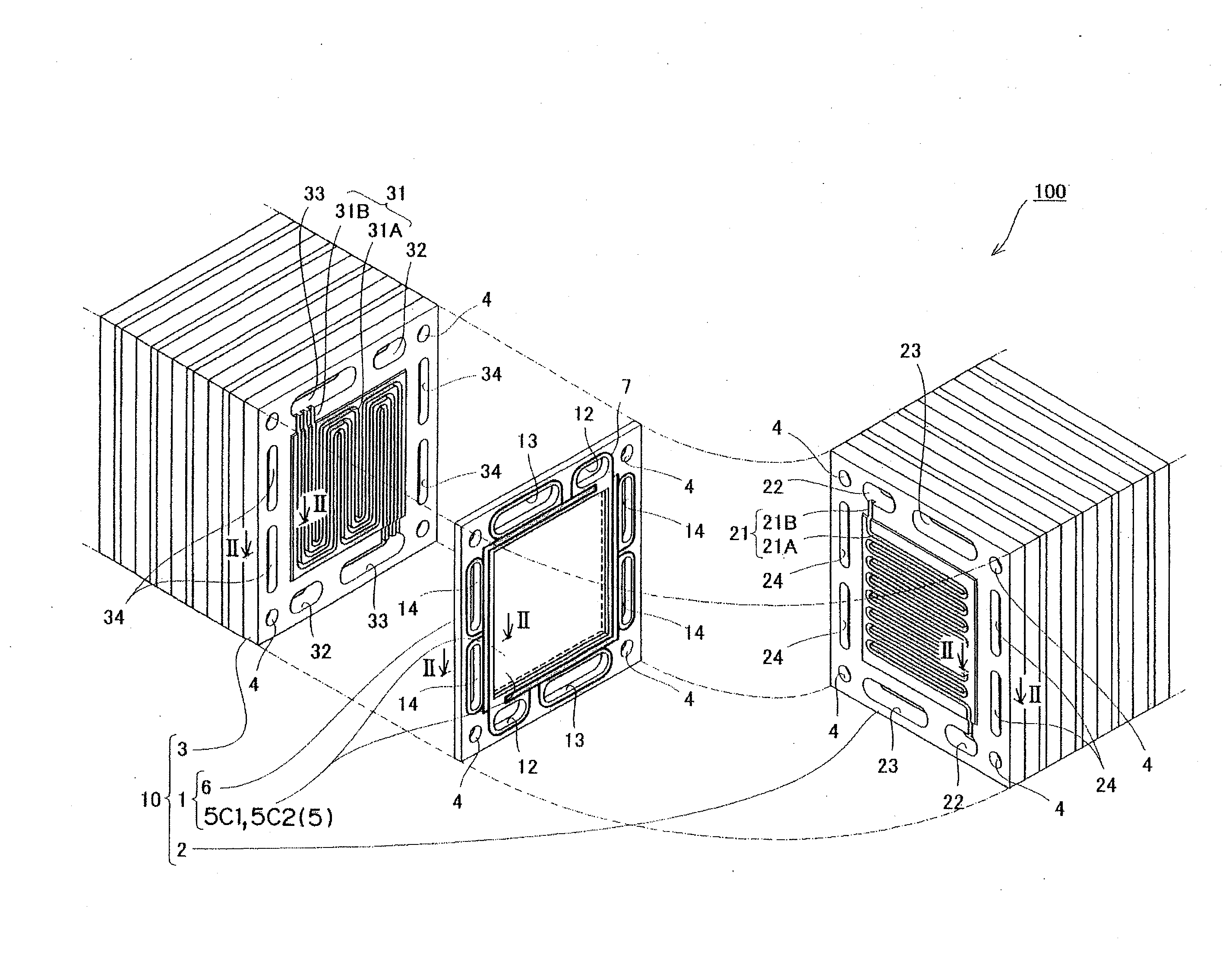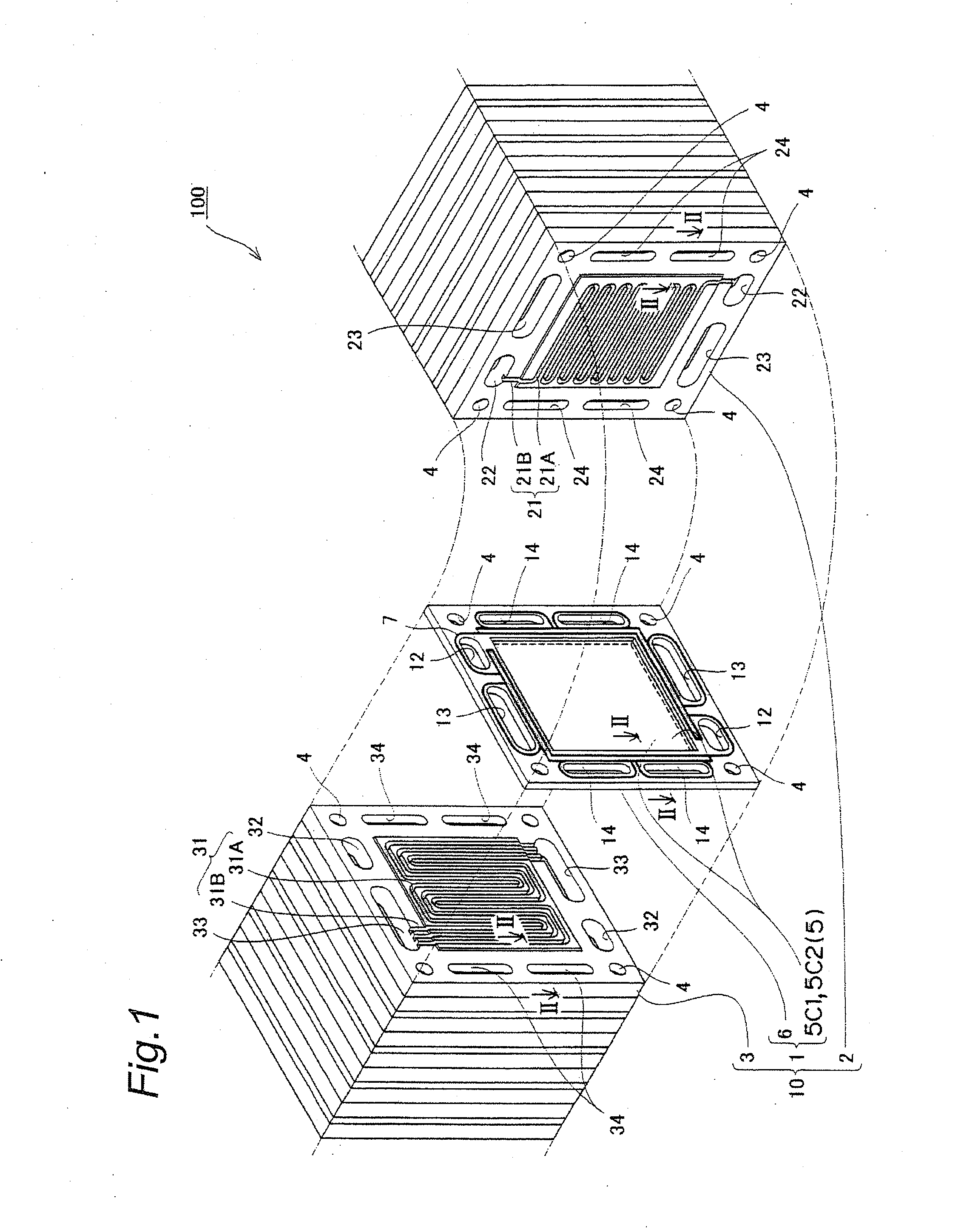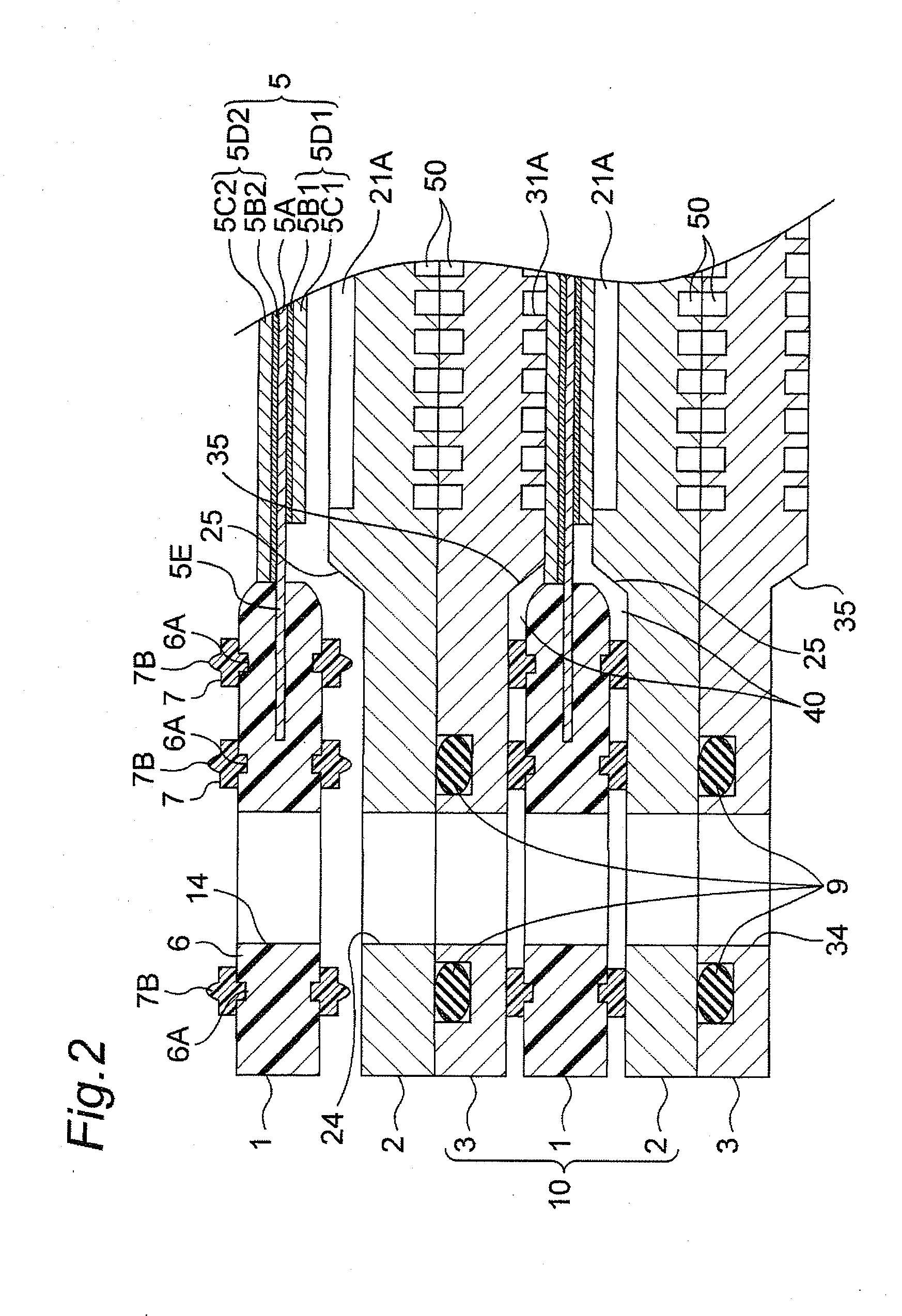Method for producing an electrode-membrane-frame assembly
a technology of membrane frame and assembly, which is applied in the direction of final product manufacturing, sustainable manufacturing/processing, electrochemical generators, etc., can solve the problems of cost disadvantages, and achieve the effect of preventing broken or deformed, and raising mold precision
- Summary
- Abstract
- Description
- Claims
- Application Information
AI Technical Summary
Benefits of technology
Problems solved by technology
Method used
Image
Examples
first embodiment
[0099]FIG. 1 is a perspective view wherein a structure of a solid polymer electrolyte fuel cell having an electrode-membrane-frame assembly related to a first embodiment of the invention is partially exploded and schematically illustrated.
[0100]As illustrated in FIG. 1, a solid polymer electrolyte fuel cell (PEFC) 100 is formed so that cells (single-cell modules) 10, which are each a basic unit structure, are laminated onto each other. collector plates, insulating plates, and end plates, which are not illustrated, are fitted to an outmost layers of both ends of the cells 10, and the cells 10 are formed to be pushed from both the ends, and clamped or jointed to each other by means of clamping bolts (not illustrated) inserted into bolt holes 4 and nuts (not illustrated). In the first embodiment, the cells 10 are laminated onto each other in a number of 60, and the bolts inserted into the bolt holes 4 and the nuts are jointed to each other at a jointing force of 10 kN.
[0101]Each of the...
second embodiment
[0156]The following will describe an MEA related to a second embodiment of the invention. FIG. 11A to 11D are schematic explanatory views illustrating steps for producing the MEA related to the second embodiment of the invention, wherein a joint region between an MEA principal part and a frame is enlarged and shown. FIG. 12 is a schematic sectional view of the MEA related to the second embodiment of the invention.
[0157]When the MEA 1 related to the first embodiment is used to constitute any one of the cells 10, gaps 40 are made, as illustrated in FIG. 2, between: a vicinity of the joint region between the frame 6 of the MEA 1 and the MEA principal part 5; and the separators 2 and 3. A fuel gas and an oxidizer gas undergo an electrochemical reaction mainly between the electrode layers 5D1 and 5D2 opposed to each other; however, it is feared that the gaps 40 become a passage for a shortcut so that the fuel gas and the oxidizer gas do not pass between the electrode layers 5D1 and 5D2.
[...
third embodiment
[0166]The following will describe an MEA related to a third embodiment of the invention. The MEA related to the third embodiment of the invention is different only in the structure of its MEA principal part from the MEA related to the first embodiment. The MEA is equal in the others to the MEA related to the first embodiment; thus, overlapping descriptions thereof are omitted.
[0167]FIG. 13 is a plan view of the MEA principal part, which the MEA related to the third embodiment of the invention has. As illustrated in FIG. 13, an MEA principal part 5a has a structure wherein a rectangular anode electrode layer 5D1 and a rectangular cathode electrode layer 5D2 are arranged to cross their long sides (or short sides) with each other (for example, perpendicularly) so that the layers have overhanging portions, where the layers are not opposed to each other. In other words, the cathode electrode layer 5D2 is arranged so that its long sides cross paired long sides of the anode electrode layer...
PUM
| Property | Measurement | Unit |
|---|---|---|
| jointing force | aaaaa | aaaaa |
| thickness | aaaaa | aaaaa |
| thickness | aaaaa | aaaaa |
Abstract
Description
Claims
Application Information
 Login to View More
Login to View More - R&D
- Intellectual Property
- Life Sciences
- Materials
- Tech Scout
- Unparalleled Data Quality
- Higher Quality Content
- 60% Fewer Hallucinations
Browse by: Latest US Patents, China's latest patents, Technical Efficacy Thesaurus, Application Domain, Technology Topic, Popular Technical Reports.
© 2025 PatSnap. All rights reserved.Legal|Privacy policy|Modern Slavery Act Transparency Statement|Sitemap|About US| Contact US: help@patsnap.com



